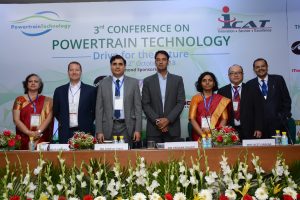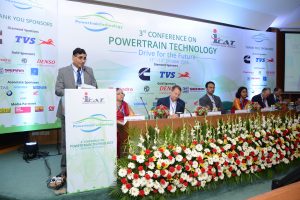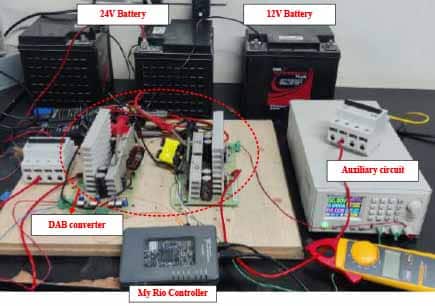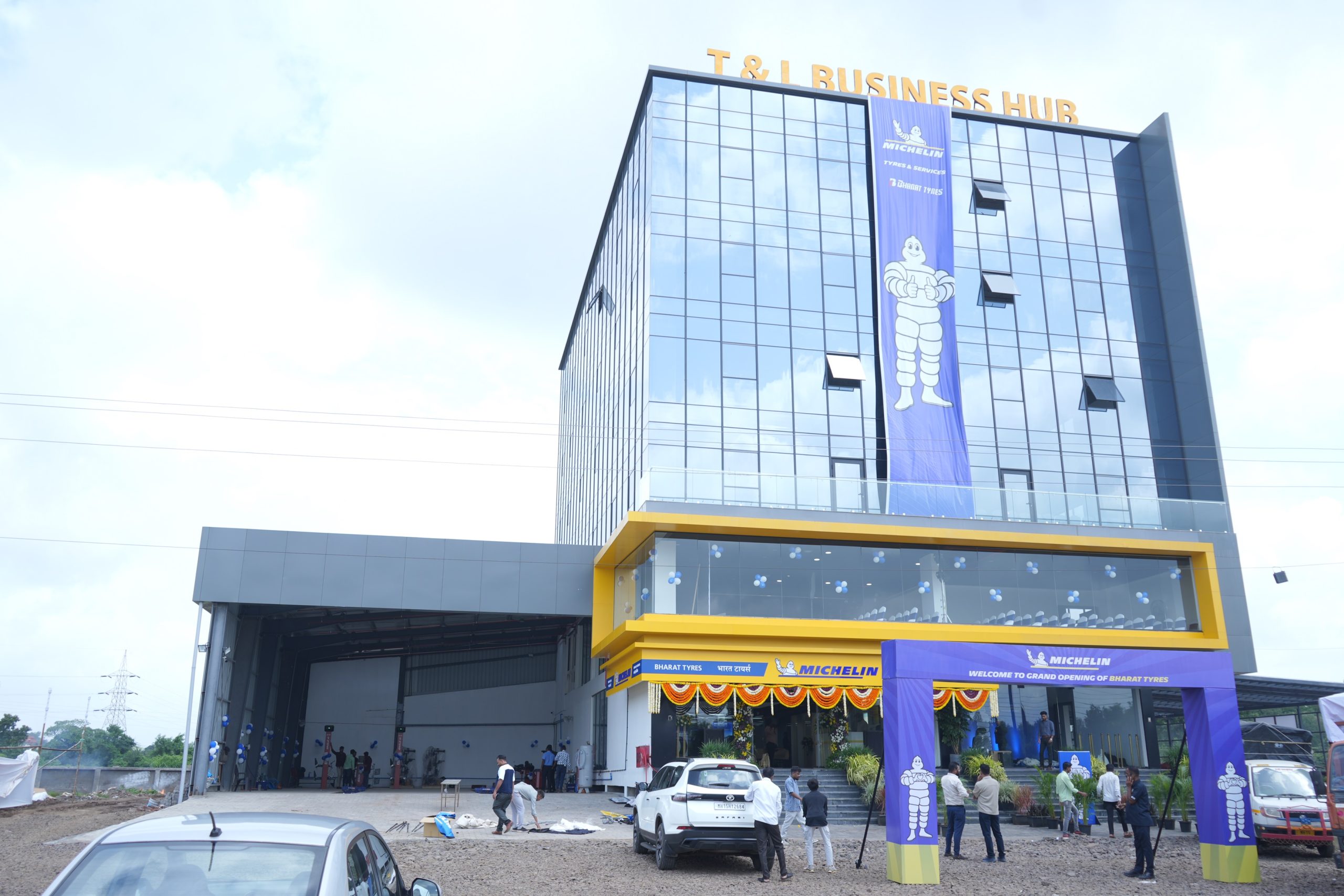The third edition of ICAT focused on new powertrain technologies with a special focus on BSVI emissions norms, alternative fuels and electromobility.
Story by: Gunjan D Bidani & Sukhpreet Singh
The recently concluded 2-day convention organised in New Delhi by the International Centre for Automotive Technology (ICAT), revolved around the future of new powertrain technologies. Coming in at a time when the emphasis on the use of alternative fuel propulsion systems like hydrogen fuel cells, biofuels and EVs among others are fast gaining momentum, the theme of the convention – Powertrain Technology was rather apt. With participation from Original Equipment Manufacturers (OEMs) like Mahindra & Mahindra to startups such as TwentyTwo Motors among other stakeholders of the industry, sustainable mobility solutions, it would be fair to say, got the due attention.
Changing landscape of powertrains
Averred Dinesh Tyagi, Director, ICAT, “While electric vehicles are the way forward, fuel-cell technology should also be explored and if required, exploited for a country like India due to the volume of vehicles and the limited availability of raw materials such as Cobalt and Lithium.” Said P Balendran, Executive Director, MG Motor India Limited, “The Indian OEMs have improved their designs to meet the next generation demand. Although it is out of context for a powertrain technology convention, electronics taking care of the driving dynamics would mean a lower number of accidents.” Opined Balendran that the new mobility solutions would take over albeit it could take some more time before the industry matures to the desired EV standards. Charles Frump, Managing Director, Volvo Auto India, spoke about the importance of being ready in time for the BSVI emission norms rollout. Volvo, he said, as a brand had a lineup of existing as well as upcoming products in line with the new emission norm. Speaking of challenges he mentioned that the biggest challenge for Volvo would be to bring in 1 million electric cars on the road by 2025 globally. Frump went on to add that the plug-in hybrid electric vehicle technology in his opinion would be the way forward.
Building the ecosystem
Representing the oil companies, R K Malhotra, Director, Research and Development, Indian Oil said, the largest challenges for the Indian automotive market currently are the initial cost of the battery and having in place the required charging infrastructure. He added that the challenge additionally also lies in the sourcing of raw materials not available in India. “This would mean entering into a free trade agreement with lithium-rich or lithium-controlling countries. Under the new technologies, a proper ecosystem for electric vehicles, as well as alternative fuels, would eventually be needed to create a sustainable mobility solution,” he explained.
The Startup wave
Apart from the availability of raw materials such as lithium, which is a huge concern for India, it was interesting to hear startup companies touch upon specific components in internal combustion engines that have a scope for improvement. One such company present at the convention was Zygor Energy which has proposed to various OEMs the use of its spark plugs and intake valves. Inder Sharma, Founder and Owner of Zygor Energy, stressed upon the need to upgrade the scale of such components which makes a vehicle more fuel efficient and reduces emissions by about 25 per cent. “This is made possible by using multiple electrodes which result in better combustion of the fuel and air mixture going in a petrol-powered engine’s cylinder,” he explained. Claimed Sharma that the new spark plugs had been thoroughly tested in the US.
By getting assistance from NITI Aayog, Zygor Energy is said to have made the move to bring this technology to India. The new spark plug works on the ‘Conde Effect’ where the multiple electrodes in it are spiralled and help complete combustion. “Internal Combustion Engines are not going anywhere for another 30 to 40 years and they are here to stay,” quipped Sharma. Claiming in his presentation that the new spark plugs lowered emissions and had a longer life cycle compared to conventional spark plugs, Sharma said that the basis the tests conducted in the US, the spark plugs lasted over 1 lakh kilometres. For instance, the new components are being pilot tested in New Delhi/NCR region wherein a CNG vehicle has also been factored in. A Maruti Suzuki WagonR fitted with a CNG kit is said to have resulted in better fuel efficiency as well as led to lessening the loss of acceleration. “Such pilot projects have accelerated the understanding of what a sustainable future for mobility could be,” he stated.
Testing new mobility solutions
Devesh Pareek, Manager, Electronics, ICAT, continued with the various applications where ICAT tests an array of automotive components at its facility, in Manesar. The investment of Rs 1,100 crore for these facilities is in line with the testing for premium products as well as components being specially designed for electric mobility. Added Pareek that ICAT has always encouraged startups to test their new mobility solutions at its test facilities. Supporting EVs, he explained that in an electric vehicle, the losses that happen at the wheel for the energy transferred from a battery are substantially less than in an internal combustion engine. Of the belief that the electric powertrain, which is already efficient, can be made better by using better electronics like updated controllers etc. Regeneration of energy such as regenerative braking is also another area where ICAT is focusing on as it will increase the overall efficiency of a vehicle. An experiment conducted by ICAT at one of its test facilities concluded that for heavy vehicles used in public transportation, regenerative braking is imperative. “A rugged electronic system should be able to withstand the high current values during the regeneration of electricity and similarly the battery needs to be able to withstand the high current for a short period of time,” he said.
Outlook
Sameer Jindal, Director, MG Motors India, drew attention to the trends in global markets like China. Elaborating on the adoption of a possible model for India on the lines of the developed markets, which may not be the same as China’s, but similar, he lauded the heavy incentives by the Government and further support by the local government bodies that in his opinion played a crucial role in pushing forward the adoption of e-mobility solutions. Touching upon the changing landscape of powertrains technology, the third edition of ICAT convention rooted for sustainable mobility solutions going forward in a bid to cut down the carbon footprint, minimising it across the entire automotive sector.
——
Watch out for the detailed story in the upcoming issue of ACI Magazine.











Leave a Reply